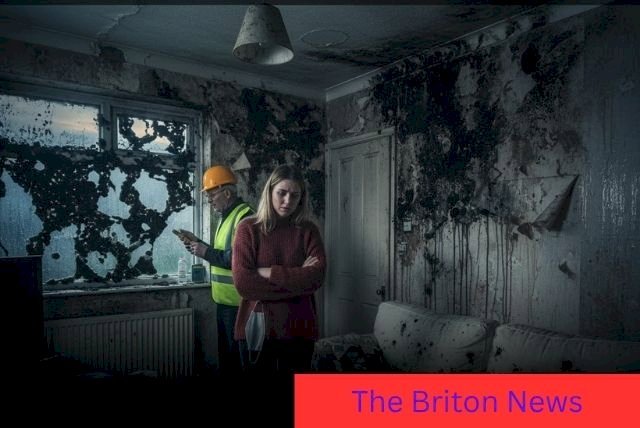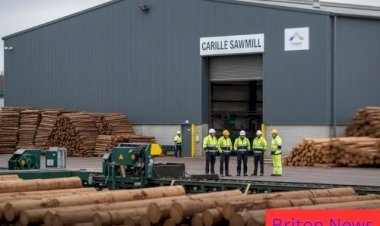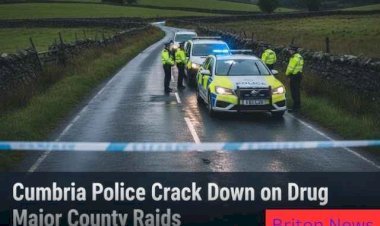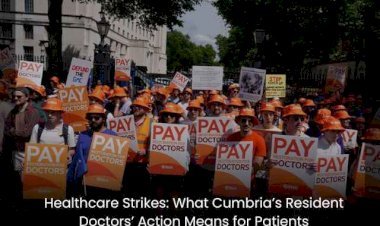Thousands of UK Homes Face Damp and Mould After Faulty Eco Insulation Installs
A new NAO report reveals that 98% of homes fitted with eco insulation under UK government schemes suffer major defects. Repair costs reach £250,000 in severe cases as Ofgem investigates fraud.

LONDON, October 2025 — Tens of thousands of UK homes are suffering from damp, mould, and structural problems after being fitted with eco insulation under government-backed schemes, according to a damning National Audit Office (NAO) insulation report October 2025.
The watchdog found that around 98% of properties with external wall insulation — roughly 22,000 to 23,000 homes — require remedial work, while 29% of internal wall insulation homes (around 9,000–13,000 properties) also have serious defects. Around 6% of external and 2% of internal installations pose immediate safety risks, making some homes unsafe to live in.
The report has turned what was meant to be a cornerstone eco insulation scheme UK initiative into a costly housing crisis, shaking public confidence in Britain’s net-zero plans.
A Green Dream Gone Wrong
The UK’s push for sustainable housing began with programmes like the Energy Company Obligation (ECO) and later the Great British Insulation Scheme — both aimed at improving energy efficiency and cutting carbon emissions.
These schemes promoted eco friendly insulation, eco home insulation, and other environmentally friendly insulation options, encouraging households to upgrade their homes and reduce heating costs.
However, the NAO insulation report October 2025 paints a bleak picture: poor workmanship, inadequate installer training, and weak oversight have led to widespread defects, from water ingress to mould growth.
“Tens of thousands of families now live in unsafe or unhealthy homes because of failed installation practices,” the report warned.
Scale of the Problem and Repair Costs
According to watchdog estimates, repairs typically cost between £5,000 and £18,000 per home, depending on the severity of the damage. In exceptional cases — particularly older brick or heritage properties requiring full insulation removal and wall restoration — bills have reached as high as £250,000.
Many homeowners who trusted the government’s eco insulation scheme UK are now facing years of disruption and uncertainty while awaiting remedial work.
Energy Company Obligation (ECO) Failings
One of the key issues identified by the NAO involves Energy Company Obligation (ECO) failings. The scheme, introduced in 2013, required energy suppliers to fund insulation for low-income households. But in many cases, work was subcontracted multiple times, with limited quality checks or accountability.
The result, watchdogs say, has been a chain of poorly managed installations that left thousands of homes with gaps in insulation, missing ventilation layers, or incorrectly sealed external walls.
The government has since admitted oversight “fell short” and promised a stricter inspection framework for future green home programmes.
Great British Insulation Scheme Defects
Problems are not confined to older initiatives. Newer projects under the Great British Insulation Scheme have also shown significant defects in some recently retrofitted homes.
Independent assessors found similar issues — moisture build-up, poor material choice, and insufficient waterproofing — across multiple regions.
Experts say this suggests that while the eco insulation technology itself is sound, the installation standards remain inconsistent, undermining the overall programme’s goals.
Health Risks From Damp and Mould
Beyond the financial burden, the crisis poses real health dangers. Medical experts warn that damp, mould, and condensation inside sealed walls can lead to respiratory problems, asthma, and chronic allergies, especially among children and the elderly.
The Chartered Institute of Environmental Health said poorly installed eco friendly house insulation can “trap moisture and create conditions ideal for mould growth.”
Local councils across the UK are reporting growing complaints from residents suffering from health issues due to these conditions.
Home Insulation Fraud: Ofgem Investigation
Adding to the crisis is the ongoing home insulation fraud Ofgem investigation. Ofgem believes up to 16,500 homes may have been affected by fraudulent or incomplete insulation work, costing suppliers and taxpayers an estimated £165 million.
Investigators found that some contractors submitted false claims for unfinished jobs, while others used unqualified workers to cut costs.
“We are deeply concerned about the level of fraud and its impact on vulnerable households,” an Ofgem spokesperson said. “Our enforcement teams are actively pursuing offenders to ensure accountability.”
Government Response and Slow Repairs
The Department for Energy Security and Net Zero (DESNZ) has pledged to repair all affected homes at no cost to residents. However, progress has been slow — by mid-2025, only around 12% of the identified homes had received full repairs or replacements.
A DESNZ spokesperson told Briton News:
“We recognise the scale of the challenge. We remain committed to restoring trust in energy-efficiency schemes and ensuring future installations meet the highest standards.”
The department says it is now reviewing certification rules for eco loft insulation, eco home insulation, and external wall systems to avoid repeat failures.
Training and Oversight Shortcomings
Industry experts agree that the crisis stems largely from poor training and oversight. Many installers were inadequately trained, and there was no unified accreditation system ensuring competence across the board.
The National Insulation Association (NIA) has called for mandatory retraining of contractors and the creation of a new independent inspection authority for environmentally friendly insulation projects.
“You can’t fix a climate problem with bad construction,” one NIA representative said. “If we want to deliver a true green housing revolution, we must invest as much in people as in technology.”
Impact on Net-Zero Goals
The scandal threatens to derail the UK’s broader climate ambitions. Residential energy efficiency improvements — including eco friendly insulation and eco friendly house insulation — are a key part of the government’s net-zero strategy.
But as public trust erodes, fewer homeowners are likely to participate in upcoming schemes, putting the UK’s 2050 targets at risk.
Environmental campaigners argue that urgent reforms are needed to prevent another large-scale failure. A spokesperson for Friends of the Earth said:
“This crisis shows that green homes must also be safe homes. Without stronger oversight, we risk undermining public confidence in the UK’s entire climate transition.”
Legal and Consumer Action
Several law firms and consumer rights organisations have begun exploring compensation claims for affected homeowners. Collective legal actions could force installers and scheme administrators to cover damages caused by faulty eco insulation installations.
Meanwhile, watchdogs urge residents to report issues via the official government portal and to seek independent damp and structural assessments before repairs begin.
A Costly Lesson for the Future
The eco insulation scheme UK was designed to save energy and money — but without adequate checks, it has cost both.
The NAO insulation report October 2025 has sparked calls across Parliament for stricter quality standards, greater transparency, and criminal accountability for fraudulent contractors.
As Britain continues its path toward decarbonisation, policymakers agree that the lessons from these Energy Company Obligation (ECO) failings must shape all future initiatives.
“We can’t afford another green housing disaster,” one MP said. “The future of Britain’s net-zero plan depends on getting this right.”
Conclusion
The UK’s eco insulation crisis stands as a warning: sustainability without quality control is unsustainable. With repair costs mounting, fraud investigations continuing, and public trust shaken, the government faces a pivotal moment to restore confidence in its green housing vision.
Only by learning from the Great British Insulation Scheme defects and the Energy Company Obligation (ECO) failings can Britain hope to deliver the safe, efficient, and environmentally friendly insulation future it once promised.
Relevant FAQs
1. What did the NAO insulation report October 2025 reveal?
The National Audit Office (NAO) insulation report October 2025 revealed that around 98% of homes with external wall insulation installed under government-backed eco insulation schemes in the UK have major defects. The report highlighted poor workmanship, weak oversight, and serious safety and damp issues affecting tens of thousands of households.
2. What is the eco insulation scheme UK and why is it under criticism?
The eco insulation scheme UK was launched to improve home energy efficiency and cut carbon emissions through government-funded installations. However, it faces heavy criticism after watchdogs found widespread damp, mould, and structural damage caused by poor installation and quality control, leading to major financial and health concerns for homeowners.
3. How much do repairs for faulty eco insulation cost?
Repair costs for defective eco insulation typically range between £5,000 and £18,000 per home, depending on the extent of damage. In severe cases, especially older or heritage homes requiring full replacements, costs can reach up to £250,000 according to UK housing watchdog estimates.
4. What are the main Energy Company Obligation (ECO) failings?
The main Energy Company Obligation (ECO) failings include poor installer training, lack of oversight, subcontracting issues, and limited quality checks. These failings led to insulation defects, dampness, and safety risks in thousands of homes across the UK, undermining confidence in the government’s energy-efficiency goals.
5. What are Great British Insulation Scheme defects?
Great British Insulation Scheme defects refer to problems such as trapped moisture, poor material application, and incomplete sealing found in homes retrofitted under the new government scheme. Experts say these issues mirror the earlier ECO failings and highlight the need for stronger installer standards and oversight.
6. What is the home insulation fraud Ofgem investigation about?
The home insulation fraud Ofgem investigation is probing claims that some contractors falsely billed for incomplete or unsafe eco insulation work. Ofgem estimates that up to 16,500 homes may have been affected, with potential losses to energy suppliers and taxpayers reaching £165 million.
7. Are homeowners responsible for the cost of repairs?
No. The Department for Energy Security and Net Zero (DESNZ) has confirmed that homeowners will not bear the cost of repairs caused by faulty eco insulation installations. The government has committed to funding remedial work under the repair scheme, although progress has been slower than expected.
8. How does this affect the UK’s net-zero goals?
The insulation defects have undermined public confidence in green housing initiatives and may slow the adoption of eco friendly insulation and other sustainability measures. Experts warn that without urgent reforms and improved quality control, the UK could struggle to meet its 2050 net-zero carbon targets.
9. What can homeowners do if affected by faulty eco insulation?
Homeowners affected by faulty eco insulation should report their case via the government’s official repair portal or contact local authorities. They can also seek independent structural assessments and legal advice, as collective compensation claims are being considered against installers and scheme administrators.
10. How will the government prevent future insulation scheme failures?
The UK government plans to introduce stricter installer certification, independent quality inspections, and tougher penalties for fraud under new green housing programmes. Lessons from the Energy Company Obligation (ECO) failings and Great British Insulation Scheme defects are shaping the next generation of energy-efficiency policies.

















